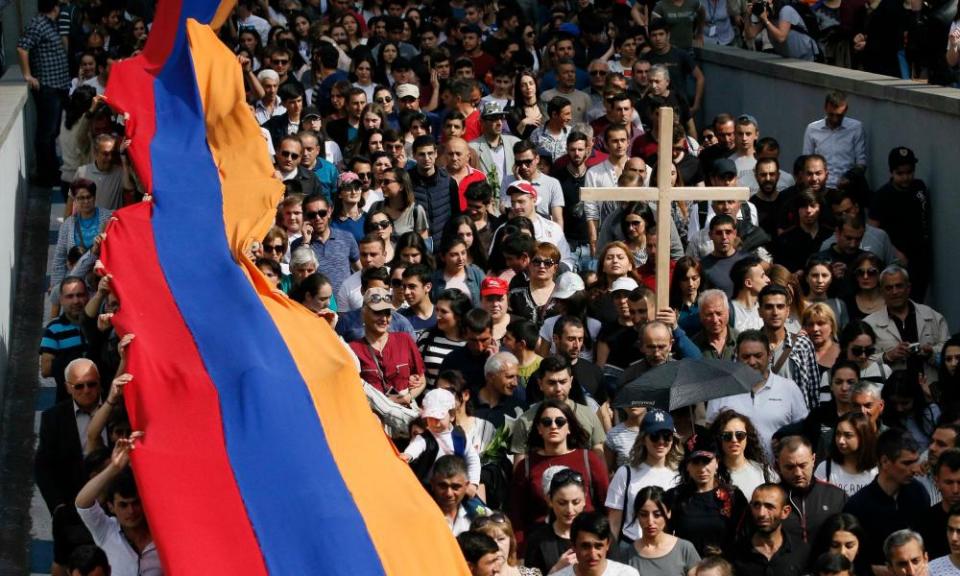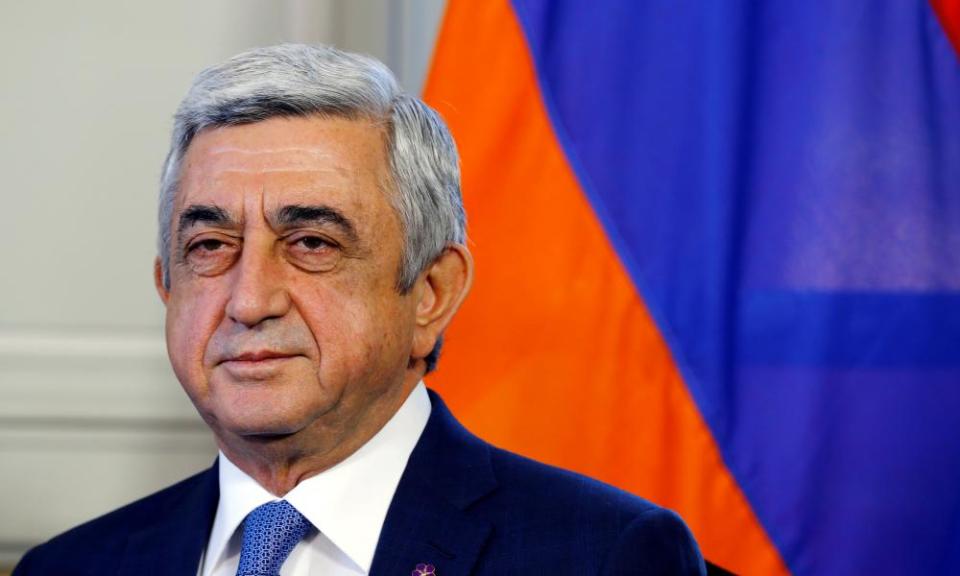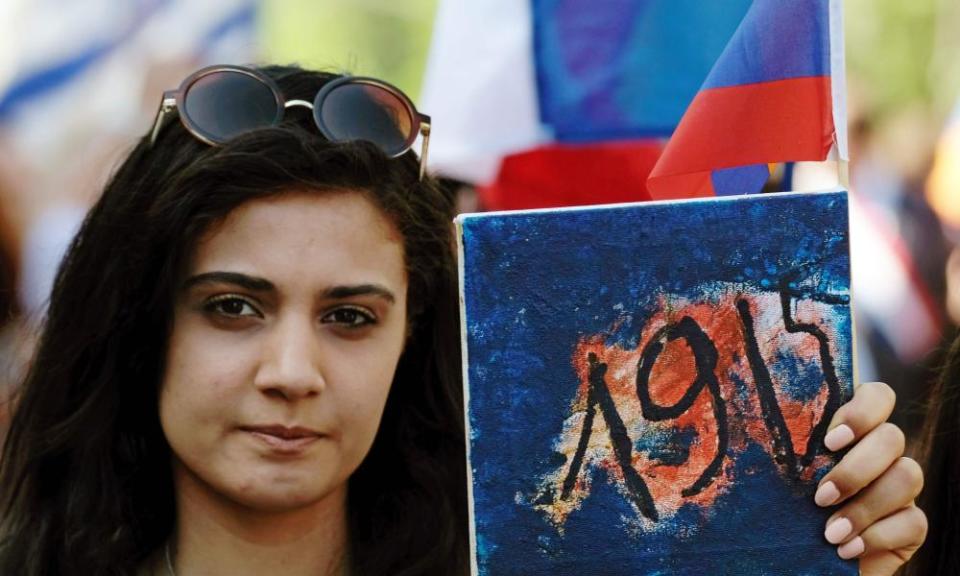'We took down a powerful man': Armenians mark victory and genocide

Despite the political hurdles looming, the afterglow from Armenia’s peaceful revolution has not worn off just yet.
On Tuesday, the morning after Serzh Sargsyan’s resignation, Maral Aznauryan, 15, skipped toward the capital Yerevan’s central square with the red, blue and orange Armenian flag draped over her shoulders.
“I couldn’t sleep all night, I was just yelling, crying,” she said. “My brother, my parents, we were all together in this.”
Hours later she would be joined by tens of thousands, marching in a column in remembrance of the victims of the Armenian genocide. This year’s annual day of mourning, said some, would now also mark a milestone in the country’s political progress.
Sargsyan’s removal after more than a decade in power was the triumph of a diverse resistance movement of student activists, liberal politicians, ordinary workers, civil society leaders and even soldiers who deserted their barracks in the last hours before victory.

Sparked by his decision to take on the post of prime minister after serving for more than a decade as president, it was a decentralised movement that managed to stand its ground even as its leaders were detained after 10 days of demonstrations during which a new political generation seemed to emerge.
“Above all, this was a victory for the youth,” said Suren Eyramjyan, an engineer and political activist. He was picking up rubbish on Tuesday morning, answering a call from a Facebook protest group to come down and clean up after the revolution that brought tens of thousands of people out on to the streets the day before.
The weeks ahead will bring new struggles, as that diverse opposition, united against Sargsyan but quite different in other respects, seeks to carry its momentum into the formation of a temporary government and possible snap elections, with crucial negotiations scheduled for Wednesday morning.
But for the diehard political activists, who traced their struggle back at least a decade, Tuesday was still a day for euphoria, as well as for reflection.

“We spent our entire 20s in street politics,” said Olya Azatyan, a veteran civil rights activist who protested with friends under the banner “Reject Serzh”. “It was totally worth it.”
The last 10 years have brought a cycle of demonstrations in Armenia: the protests against electoral fraud in 2008 that ended in gunfire and with 10 dead; demonstrations over municipal services and pension changes; the mass protests in 2013 against Sargsyan’s re-election as president; and protests three years ago against a hike in energy bills that became known as Electric Yerevan.
“Everything was building towards this,” said Eyramjyan.
The protest leader Nikol Pashinyan, who co-heads the liberal Way Out Alliance party, has set out his roadmap for Armenia’s political transition.
The first step, Sargsyan’s resignation, has already been achieved. The next steps may be more complex: organising an interim government to carry out elections as soon as possible.
Pashinyan will hold negotiations on Wednesday with the interim prime minister, Karen Karapetyan, a veteran politician who had already served as prime minister and mayor of Yerevan, and previously ran a joint venture between Armenia and Gazprom, the Russian state energy firm.

But Tuesday remained a public holiday, as Pashinyan emerged at the head of a column of tens of thousands leading from Republic Square to the memorial to the Armenian genocide.
“Yesterday we took down a powerful man with no help from outside, with no violence, the first time in history,” said Aram, a retiree in the procession, who gave only his first name and flashed a smile with a gold tooth. “Today we remember the dead.”
Many of the men and women who blocked off the streets of central Yerevan, and other Armenian cities, including Gyumri and Vanadzor, protested less with a broad political plan than specific grievances and a sense of anger at Sargsyan.
Hovhannes Chibukhchyan, 23, said he came out to protest against a new law that restricted the rights of students to defer their entry into the military draft.
“We want simple things: to study and be left alone,” said Chibukhchyan, who is studying for a master’s degree at a polytechnic university in the capital.
He said he was more concerned about rising gas prices than whether Pashinyan become prime minister.
But that, he said, was a question for another day. “We don’t even know what has happened yet. For the first time I am hopeful about the future.”

 Yahoo News
Yahoo News 